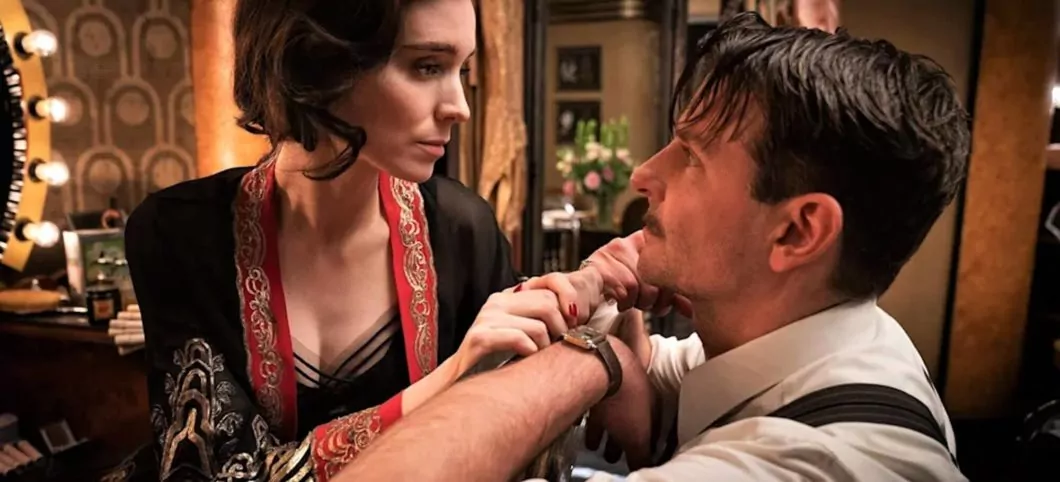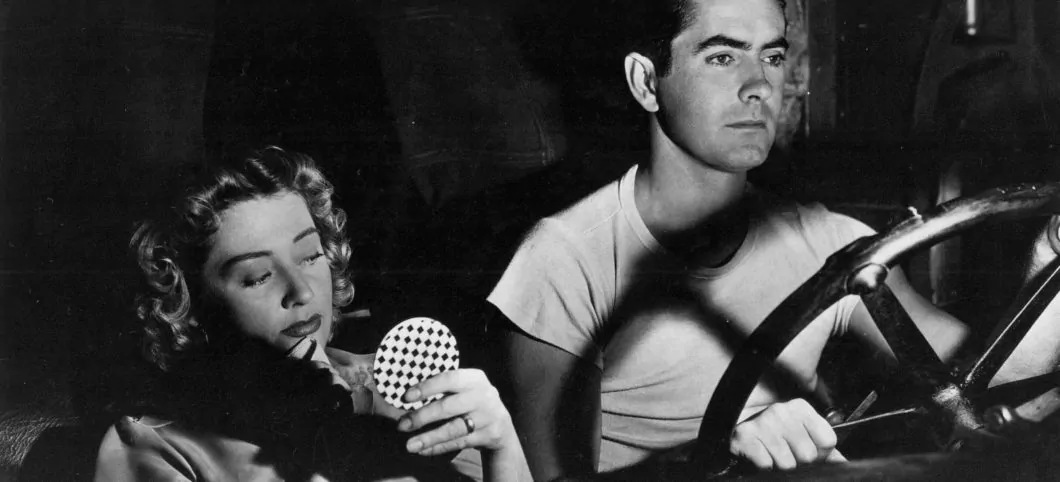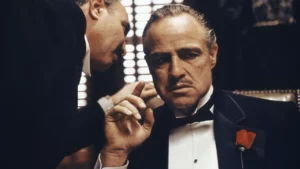
When Guillermo Del Toro announced the absence of any monsters in his next venture, it must have been a sigh of relief for those terrified of the horrifying varieties usually present in his movies. But unmistakably, those who came out of the theatre after relishing his latest directorial may not have missed the monsters present in it even when they are of a different kind.
Based on the 1946 novel of the same name by William Lindsay Gresham, Nightmare Alley (2021) is the second movie adaptation of the book. The 1947 film noir classic, Nightmare Alley, starred Tyrone Power in the leading role. With some differences between the two adaptations, Nightmare Alley (2021) presents Bradley Cooper taking up the role of a charming and savvy carnival worker Stanton Carlisle. In Stanton, he partially mirrors a journey taken up by the character that fetched him his last Academy Award nomination for A Star is Born. Both characters spiral into a downfall. In the case of Stanton, it’s through murder and treachery.
Just like its 1947 predecessor, the 2021 neo-noir thriller is also packed with an element that’s common in most noir films- a twist in the climax. While there are differences in both adaptations, Del Toro’s version delves more deeply into its setup leaving plenty of possibilities for film geeks to decode the ending. Let’s unwrap the layers behind Stanton Carlisle’s maniacal laughter and sobbing at the end of Nightmare Alley (2021).
The Rise
For a first impression, Stanton Carlisle (Bradley Cooper) is seen burning a body in a house. In his next appearance, he reaches a carnival where a particular act attracts his fascination- the geek. For the uninitiated, a geek is a man who’s often on the verge of insanity and thus becomes a subject of curiosity for the carnival-goers. Clem who runs the geek act offers Stanton a job. Stanton decides to stay with the carnival, and there he befriends Madame Zeena and her alcoholic husband Pete while helping them perform a clairvoyant act. Pete reveals how they use coded language and cold reading to perform their unique act. This discovery gives him an idea of using the same for a spook show. An idea that isn’t welcomed very warmly by either Zeena or Pete.
One night, Stanton helps Clem dump the sick geek. Later, he asks Clem about how he gets men to be geeks for him. Clem reveals how he finds alcoholics on their way down, pretends to offer them a “temporary” job, gets them slowly addicted to opium-laced alcohol, and makes them permanently dependent on him. Soon the geeks end up just being madmen and addicts, people the society couldn’t care less for.
While Stanton spends his time with Pete, he learns a thing or two about Pete’s trade but ends up poisoning him with wood alcohol on an unfortunate night. (Whether it’s an accident or murder is not clear.) He spends a bit more time at the carnival polishing his skills before finally leaving with Molly, one of the carnies, who gets enamored by Stanton’s charm.
The Great Stanton
Two years later, Stanton now performs a psychic act, along with Molly, in a nightclub for the wealthy where he uses his tricks to earn some dough. One night, he comes across Dr. Lilith Ritter, a psychologist who tries and fails to expose Stanton’s tricks. He finds out that Lilith has been hired by the wealthy judge Kimball to test him out. He approaches Stanton with the expectation that he will help him and his wife get in touch with their demised son.
Ritter lures Stanton to her office. Stanton realizes that Lilith has recordings of her sessions with some powerful people in the town and offers her to reveal the secrets to him so that he can use them to con some rich folks in return for money. Lilith agrees but only on one condition- Stanton must agree to therapy sessions with her. Carlisle, confident of his skills, agrees without sensing any danger. Stanton then uses the secrets revealed by Lilith about the judge to make him and his wife think he has gotten in touch with their dead son. Meanwhile, Stanton also starts having an affair with Lilith, and during the sessions, he reveals the truth about his role in Pete’s death. He also starts drinking alcohol at the same time (something he claimed to not indulge in before).
Being satisfied with his own experience, Judge Kimball introduces Stanton to Ezra Grindle, a powerful and rich individual. Having a dark past of his own, Grindle asks Stanton for his assistance to reach out to his lover who died of an abortion forced by Grindle. Molly has been resisting Stanton’s attempts to fool people by making them believe he can get them in touch with their dead loved ones ever since Kimball turned up. She finally tries to leave Stanton when she finds out about his affair with Lilith. But smart and savvy Stanton manages to convince her one last time for the last act of his con. He convinces Molly to appear before Grindle dressed as “Dorrie”, Grindle’s lover, to fulfill Grindle’s demand to see his dead lover materialize in front of him.
Everything goes as per plan until Grindle sees Molly dressed up as pregnant “Dorrie” and loses control of his senses. He runs to Molly and grabs hold of her to realize that he’s being scammed by Stanton. Upon this discovery, he threatens Stanton before being punched to death by him. On his way out, Stanton also kills Grindle’s bodyguard. Seeing this murderous version of Stanton, Molly finally abandons him (for good).
Left with nowhere to go, Stanton arrives at Lilith’s office to collect the stash of money she’s been keeping for him. As he begins to leave with the money, Lilith confesses her love for him. Stanton senses something wrong and realizes that Lilith was betraying him all along. She reveals that she has been keeping a record of the sessions in which he had confessed his crimes before finally shooting him in the ear and calling the security. After a failed attempt at strangling Lilith, Stanton escapes and loses the police on his tail by hiding inside a train. In the next scene, it’s revealed how Stanton murdered his father who he always hated (call-back to the recurring first scene).
The Laugh, The Cry and The Madness: Nightmare Alley(2021) Ending Explained
Up next, Stanton, a complete alcoholic by now, is seen in rags. He gives up his watch, the last sign of his past glory, for a gulp of alcohol. He then arrives at a carnival looking for a job as a mentalist. After being rejected first, the carnival owner sees some opportunity and offers him a drink and with it, a “temporary job.” The owner offers him a job as a geek and reaffirms as it only being a “temporary job.”
Here Stanton is reminded of Clem’s revelation to him the day they got rid of the geek. When the carnival owner offers him the temporary job of a geek, he is reminded of the path that lies ahead of him. He sees himself being subdued into an addict to alcohol and the opium in it while having to bite live chickens in front of an amused crowd to be rewarded his next drink. He knows what will happen to him and yet he cannot refuse his eventual fate. His mad laughter followed by a sob reflects his realization and final acceptance of his fate. As he says, “Mister… I was born for it.”, he finally becomes the one he dreaded the most- a geek. Nor a man nor a beast. The man who killed his father is symbolized by Del Toro through the three-eyed Enoch, the monster who killed its mother.

Nightmare Alley (1947) Ending
Coming to differences between the two adaptations, there is more than one between both movies, especially in the ending. First things first, Stanton in the earlier adaptation is not a murderer of his father and barely qualifies to be a murderer throughout. The only trauma Tyrone Power’s character suffers from is the one induced by the accidental death of Pete at his hands while Cooper’s character refuses to show any until it was scooped out of him by Cate Blanchett’s cold and cunning Lilith Ritter.
Some other major differences include the lack of murderous intent in 1947’s Stanton and the abundance of the same intent in the latest adaptation. Stanton is turned into a murderous and treacherous man in Del Toro’s darker monstrous depiction. Cate Blanchett’s Lilith fits the bill perfectly for the neo-noir femme fatale. While Helen Walker’s Lilith also cheats Stanton in the end, it doesn’t leave him nearly as devastated compared to what happens to Cooper’s Stanton in Nightmare Alley (2021).
In Nightmare Alley (1947), Molly when faced with a repenting Grindle gives up the pretense and reveals her true self. On being confronted by Grindle, Stanton doesn’t kill the man. He still makes the run for it though. Lilith still cheats him by robbing his money but she uses the evidence gathered by her just to avert the risk of being threatened by Stanton in case he claims her to be his accomplice (as opposed to the total destruction of the man plotted by Cate’s Lilith).
The intense strangulation attempt is also not part of the earlier adaptation. After being faced with homelessness and alcoholism, Tyrone’s Stanton also attempts to get a job at a carnival and he receives the same offer as Cooper’s Stanton did. But the impact of this offer is different on both. In Nightmare Alley (2021), Stanton knows he is being lured into devastation on the promise of a job as a geek whereas in Nightmare Alley (1947), Stanton still being aware of the conditions he will have to face as a geek, has no idea that it’s a trap being laid out for him.
The realization that Stanton’s maniacal laugh reflects in the ending of the latest is completely missing in the classic. Also, Molly(who probably feels guilty for Stanton’s downfall) makes a return in the final scene of the older version. She discovers him completely out of sorts performing as a geek and ignites the possibility of a second chance for the “Great Stanton”, however, no such chances are provided to Stanton when he’s brought to life in 2021. Guillermo Del Toro and Kim Morgan make sure the judgment is final for Stanton Carlisle. The fall is certain and definite in this 2021 neo-noir psychological thriller.
The Movie Culture Synopsis
Del Toro’s Nightmare Alley is not just different from the 1947 noir classic in terms of story but also contains the filmmaker’s unmistakable print etched on every scene. As Del Toro successfully adapted the book into a modern-day noir thriller, he made sure the elements of horror and fantasy he’s known for are still found somewhere in the blend.
In Stanton Carlisle, Del Toro’s usual monsters find a human form. But even at the end of 150 minutes of run time, it’s difficult to argue on who’s not a monster in a society that finds amusement in the degradation of another human- the fascinating geek- who mumbles “I’m not like this” in the hope to be heard for once.




